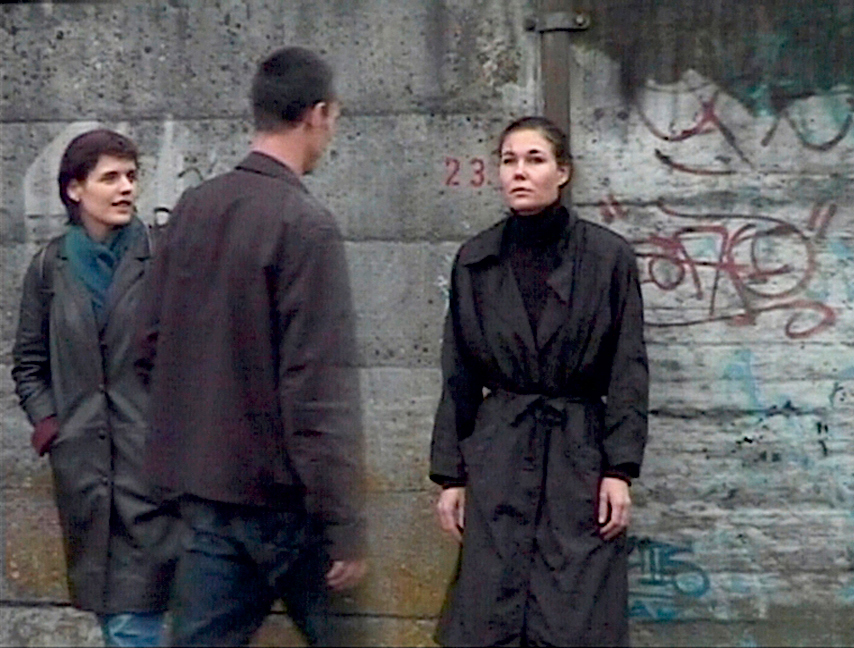












Die Künstlerin fälscht eine Selbstmord-Operation mit Hilfe eines professionellen Spezialeffekt-Teams. Im Video wird klar dass die Künstlerin nicht stirbt sondern ein Dummy explodieren lässt. Die Bilder werden begleitet von einem Text über die hohe Teilnahme von Frauen an Selbstmordattentaten. Der Text wurde aus Texten aus drei politisch unterschiedlichen Perspektiven zusammengestellt: die damaligen Al Qaida-Website welche hauptsächlich Bilder und Geschichten über Martyrium und Dschihad zeigte, eine Vorlesung an der Universität in Tel Aviv aus einer Website des Instituts für Terrorismusbekämpfung, Herzliya, und eine neutrale Quelle, ein Buch der Bundesakademie für Sicherheitspolitik. Anders als eine gewöhnliche Szene mit Special Effects zeigt dieses Video Szenen die normalerweise ausgeschnitten werden um die Illusion der eintretende Tod aufrecht zu halten.
Quellen
Kai Hirschmann, “Today’s Terrorism: A New Challenge?,” in: Peter Gerhard (Ed.), Terrorismus als Weltweites Phänomen, Berlin, 2000, p. 45-46
Yoram Schweitzer, Suicide Terrorism: Development & Characteristics, a lecture presented at the International Conference on Countering Suicide Terrorism am ICT, Herzeliya, Israel, 21 Feb. 2000, ICT website (www.ict.org.il), 21 April 2000
The Islamic Ruling on the Permissibility of Martyrdom Operations: Did Hawa Barayev Commit Suicide or Achieve Martyrdom?, QUQAZ website (www.quqaz.net/articles), 6 October 2000
Diese Arbeit wurde gezeigt
Mathilde ter Heijne, Videoart at Midnight, Kino Babylon, Berlin, 2010
Caution! Blasting Operations!, NGBK, Berlin, 2007
BASE 103, Sammlung Goetz, München, 2005
Greater New York, PS1 Contemporary Art Center, New York, 2005
Kurzfilmfestival, Oberhausen, 2005
Politics of Belief, Badischen Kunstverein, Karlsruhe, 2005
Suicide Bomb, Susanne Vielmetter Los Angeles Projects, Los Angeles, 2005
Laocoon Devoured, ARTIUM, Basque Centre of Contemporary Art, Victoria-Gasteiz, 2004
The Ten Commandments, Deutsches Hygiene-Museum, Dresden, 2004
Das Böse, Guardini stiftung, Berlin, 2004
M_ARS – Kunst und Krieg, Neuen Galerie, Landesmuseum, Joanneum, Graz, 2003
Tragedy, Migros Museum für Gegenwartskunst, Zürich, 2002
Vanessa Beecroft, Mathilde ter Heijne, Gallery Mario Seguiera, Braga, 2000
Suicide Bomb, Förderkoje Art Cologne 2000, Köln, 2000
Gesprochener Text im Video
Martyrdom or self-sacrifice operations are those performed by one or more people, against enemies far outstripping them in numbers and equipment. With prior knowledge that the operations will almost inevitably lead to death. It is a strategy of the weak against the apparently strong. The form this usually takes nowadays, is to wire up one’s body (or a vehicle or suitcase) with explosives, and then to enter amongst a conglomeration of the enemy, or in their vital facilities, and to detonate the bomb in an appropriate place, in order to cause the maximum losses in the enemy ranks, taking advantage of the element of surprise and penetration. Naturally, the enactor of the operation will usually be the first to die.
The name ‘suicide-operations’ used by some people is inaccurate, and in fact this name was chosen to discourage people from such endeavours. There is a difference between one who commits suicide because of his unhappiness, lack of patience and weakness, or absence of faith. And between the self-sacrificer who embarks on the operation out of strength of faith and conviction, to perhaps bring victory to the word of god, or by sacrificing his or her life for living in a more ideal, loving and peaceful world.
Women have played an important role in the activities of some prominent groups that use suicide-operations. For example, as part of the suicide unit “The Black Tigers” from the Liberation Tigers of Tamil Ealam, operating in Sri-Lanka and India, women participated in 40% of the group’s suicide activities. In the Syrian Socialist Nationalist Party, women took part in 6 out of the groups 12 suicide activities. In the Kurdistan Worker Party (the PKK) in Turkey, women carried out 14 of 21 suicide attacks. Apparently, it is women’s wish or ability to sacrifice themselves out of devotion for the organization they belong to, and sometimes out of love for it’s leaders, that makes them more often “volunteer” for such missions.
One of the most important aims of the suicide-operation is to create public attention and sympathy for overall demands. So the main reason for the attack is not the destruction or killing itself, but to convey vital public information, as a communication strategy.
Generally speaking, four motives for these actions can be identified:
-A desire for (revolutionary) changes in political or social structures.
-The longing of ethnic or political minorities as well as oppressed peoples for their own nation or at least a certain political and cultural autonomy.
-Single fanatic, idealistic persons (‘chosen ones’) with a certain ‘mission’ or ‘social philosophy’, planning their attacks fundamentally rationally, but without any network or group support.
-Religious motivation.
Quellen
Kai Hirschmann, “Today’s Terrorism: A New Challenge?,” in: Peter Gerhard (Ed.), Terrorismus als Weltweites Phänomen, Berlin, 2000, p. 45-46
Yoram Schweitzer, Suicide Terrorism: Development & Characteristics, a lecture presented at the International Conference on Countering Suicide Terrorism am ICT, Herzeliya, Israel, 21 Feb. 2000, ICT website (www.ict.org.il), 21 April 2000
The Islamic Ruling on the Permissibility of Martyrdom Operations: Did Hawa Barayev Commit Suicide or Achieve Martyrdom?, QUQAZ website (www.quqaz.net/articles), 6 October 2000